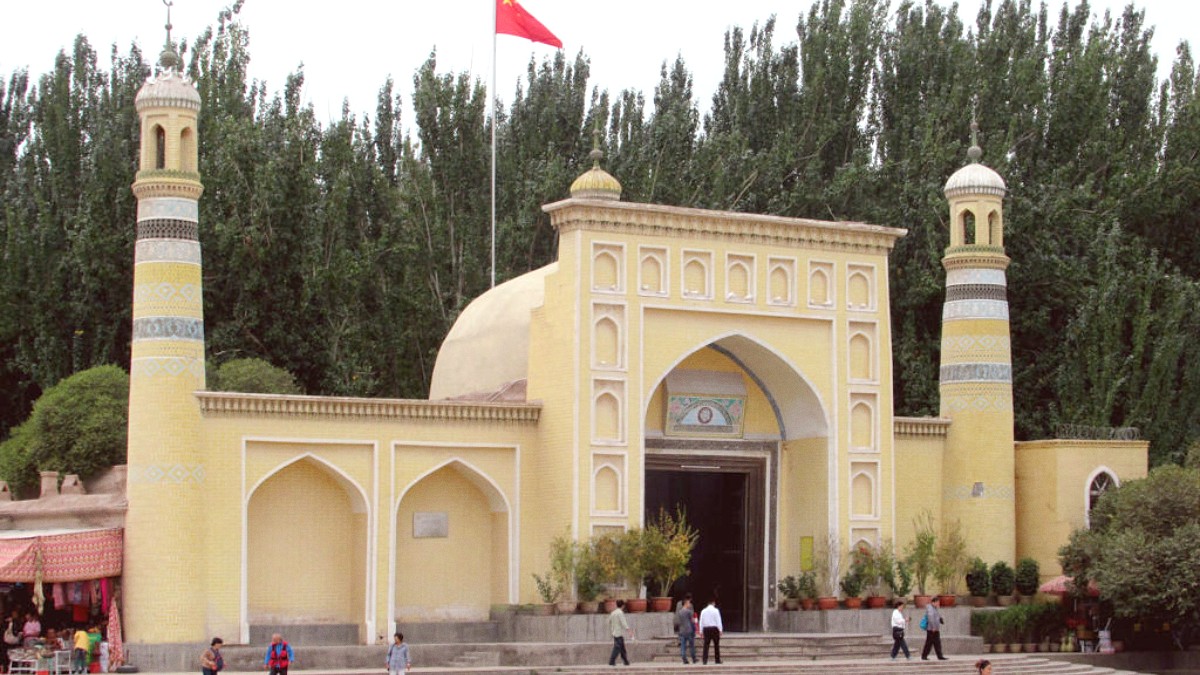
Xinjiang, China
Kashgar's cuisine is mainly Uyghur cuisine, a delicious fusion influenced by Central Asian, Middle Eastern, and Chinese culinary traditions. This reflects the region's historical role as a Silk Road crossroads, integrating nomadic and agricultural elements into its cooking.
Uyghur cuisine is a direct descendant of the rich culinary traditions that flourished along the Silk Road. Its development mirrors Kashgar's history as a melting pot of cultures. The reliance on lamb, mutton, and wheat-based products reflects the region's pastoral heritage and its agricultural staples. Unlike much of Han Chinese cuisine, which often features pork and rice as main ingredients, Uyghur food is predominantly halal (permissible under Islamic law) and heavily features bread and noodles.
While Kashgar's cuisine represents southern Xinjiang's Uyghur culinary traditions, slight local variations exist. You might find specific noodle preparations or unique local bread types in different neighborhoods or villages.
In smaller, traditional eateries, seating is often communal. Dishes are typically shared among diners, placed in the center of the table. Many traditional Uyghur restaurants are halal establishments and do not serve alcohol. Tipping is not customary in China, including Kashgar.
Lunch is typically the main meal of the day, larger and more substantial. Restaurants generally open from morning until late evening. Street food vendors are active throughout the day, especially in market areas, and continue into the night.
A rich and flavorful rice pilaf made with carrots, onions, and generous chunks of lamb or mutton (sometimes beef). Often cooked with mutton fat, it has a distinctive richness.
Find at: Restaurants called "Polo Ghaj" (Pilaf House) or general Uyghur restaurants specializing in this dish.
Hand-pulled noodles, thick and chewy, served topped with a stir-fried sauce of meat (typically lamb or beef) and vegetables (peppers, onions, tomatoes).
Find at: Laghman restaurants ("Laghman Ghaj") throughout the city, each with its own topping version.
Skewered and grilled lamb or mutton, seasoned simply with cumin and chili flakes. Known for their juicy interior and crispy exterior, often cooked over charcoal.
Find at: Street food stalls are ideal for fresh Kawap, especially popular in the evenings. Barbecue restaurants also feature them.
Xinjiang is famous for its abundant dried fruits and nuts due to its climate. Walnuts, almonds, raisins (especially "green raisins"), mulberries, and apricots are widely available and of good quality. They make excellent snacks and souvenirs.
Xinjiang is a renowned melon-growing region. Sweet melons like Hami melon and honey dew are incredibly flavorful, especially when in season during summer.
True "fine dining" as understood in Western metropolitan areas is limited in Kashgar. Higher-end hotels, like the Radisson Blu, may feature more upscale dining experiences.
Numerous local Uyghur restaurants fall into the mid-range category. These establishments offer comfortable settings, often with communal tables or private rooms.
The Grand Bazaar and Old City areas teem with options for budget-friendly and immersive dining experiences.
Experiencing kawap (kebabs) grilled fresh on the street, especially in the evening, is a quintessential Kashgar culinary experience. The smoky aroma and lively atmosphere make a memorable impression.
A true local flavor adventure.
Many bakeries permit observation of the process, and buying a fresh, warm nang directly from the oven is a simple but rewarding experience.
Freshly baked, a daily staple.
Limited options outside larger hotels. Most restaurants serve local Uyghur or Han Chinese food.
Uyghur cuisine features spicy elements, notably with red pepper and chili flakes, offering a distinct kick.
Look for local desserts, dried fruits, and fresh seasonal melons for a sweet finish to your meal.
Many dishes center on lamb, mutton, or beef, offering hearty and flavorful experiences.
Uyghur cuisine is inherently halal, as the majority of the population is Muslim. Most Uyghur restaurants serve halal meat and prepare food according to Islamic dietary laws. Look for the "halal" (清真 - qīngzhēn) sign.
Widely available in Uyghur eateries.
Kosher food is not available in Kashgar. Travelers with Kosher dietary needs should plan accordingly by bringing their own provisions.
Not available locally.
Consider accommodations featuring kitchenettes or communal kitchens. This allows you to buy ingredients from markets and prepare some of your own meals, giving you more control over ingredients.
Bring a sufficient supply of safe, non-perishable snacks from home. This presents a reliable food source when dining options are limited or uncertain.
Formal cooking classes for foreign tourists are limited or rare. Some guesthouses might offer informal demonstrations of dish preparation if you inquire, providing a glimpse into local techniques.
Some private guides or local tour operators may offer customized food tours of the Grand Bazaar or Old City. These tours focus on tasting a variety of street foods and local dishes.
Visits to fruit orchards or farms might happen as part of an organized tour, notably during the harvest season (summer for melons and grapes).
Certain fruits, like grapes and melons, are seasonal specialties, best enjoyed in summer and early autumn when they are at their peak freshness and sweetness.
Taste the freshest produce.
During Islamic festivals like Eid al-Fitr (Ramazan Bayram) and Eid al-Adha (Qurban Bayram), special dishes, sweets, and pastries are prepared for communal feasts and family celebrations.
Cultural culinary insights.
Formal community-based tourism initiatives (where tourists directly engage with local communities for economic benefit beyond commercial transactions) are very limited or non-existent for foreign visitors due to the region's sensitive nature.
Local festivals might feature special foods and culinary traditions. These events are mainly for local communities, and while visitors can often observe, they are not typically tourist-oriented public festivals.
Tipping is not customary in China, including Kashgar. It can sometimes feel confusing or even impolite to local service providers.
Be open to new tastes and local customs.